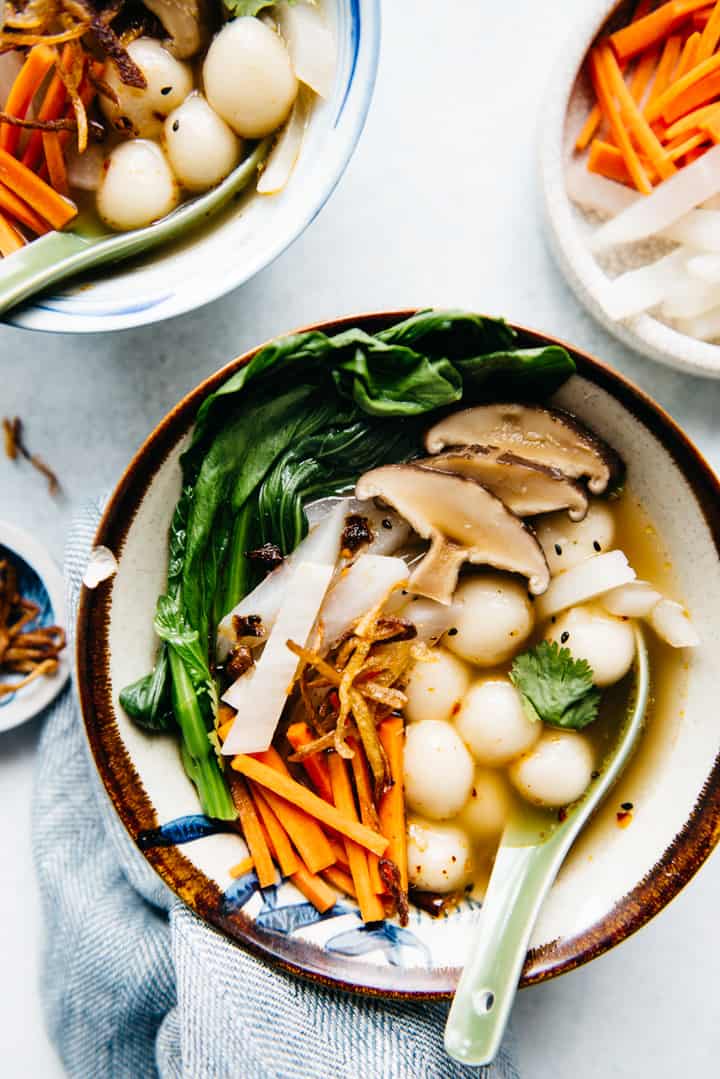
In southern China, families gather together to make and eat tang yuan (湯圓 / 汤圆) for dongzhi. Tang yuan are small dumplings made with glutinous rice flour and water. The circular shape of the dumplings symbolizes one’s family coming together (or tuanyuan, 團圓 / 团圆). Families will make the sweet and/or savory version of tang yuan, though my family prefers the savory kind.
For the dish, Mama Lin typically prepares a broth that is flavored with chicken stock, dried shrimp, Chinese sausage, lean pork, onions, and garlic. To serve, we’ll top the bowl of tang yuan with boiled daikon, fried fish cake, cilantro, and white pepper. Growing up, I favored the toppings over the plain rice dumplings. I have to admit, that is still the case.
VEGAN VERSION OF SAVORY TANG YUAN
I decided to make a vegan version of the dish, as most of my followers always ask for vegetarian and vegan options. There are two key ingredients that give the broth a delicious and rich umami flavor: dried shiitake mushrooms and kombu (kelp).
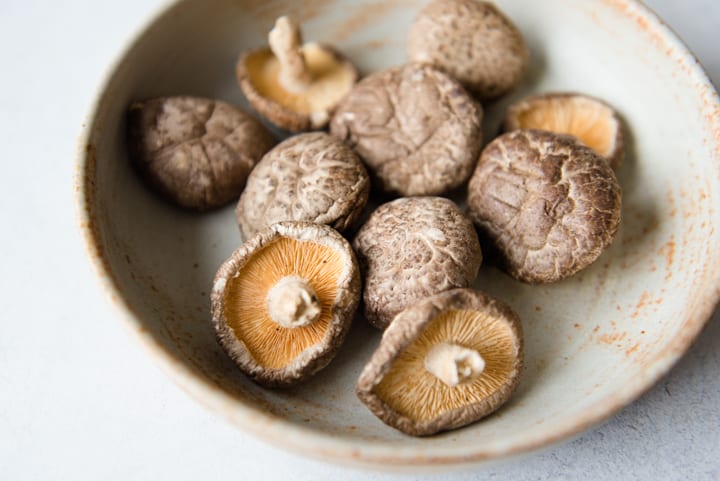

MAKING TANG YUAN DOUGH
Some people like to make the dough with boiled water. In the last 10 years or so, Mama Lin has opted for room temperature water because the dough is a lot easier to handle. She calls this the “cold-water dough.” Tang yuan dough made with room temperature water is less sticky to the hands and stays moist a little longer. It is also a relief for your hands when you knead the dough initially. Once cooked, the texture of the dumplings are the same for the hot-water dough or the cold-water dough.
The drawback of the cold-water dough is that they will stick slightly to the plate and to each other. When you roll the dumplings and transfer them to a plate, make sure the dumplings don’t touch each other. When you are ready to cook them, gently brush them off the plate. You’ll see that a tiny bit of dough will be stuck to the plate, but don’t stress about it. Mama Lin, ever the resourceful one, scrapes the bottom of the plates for dough to make one last small dumpling.
COOKING THE DAIKON
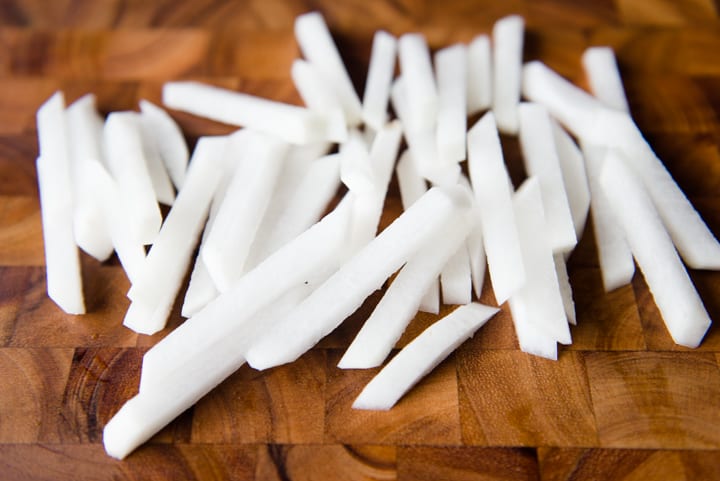
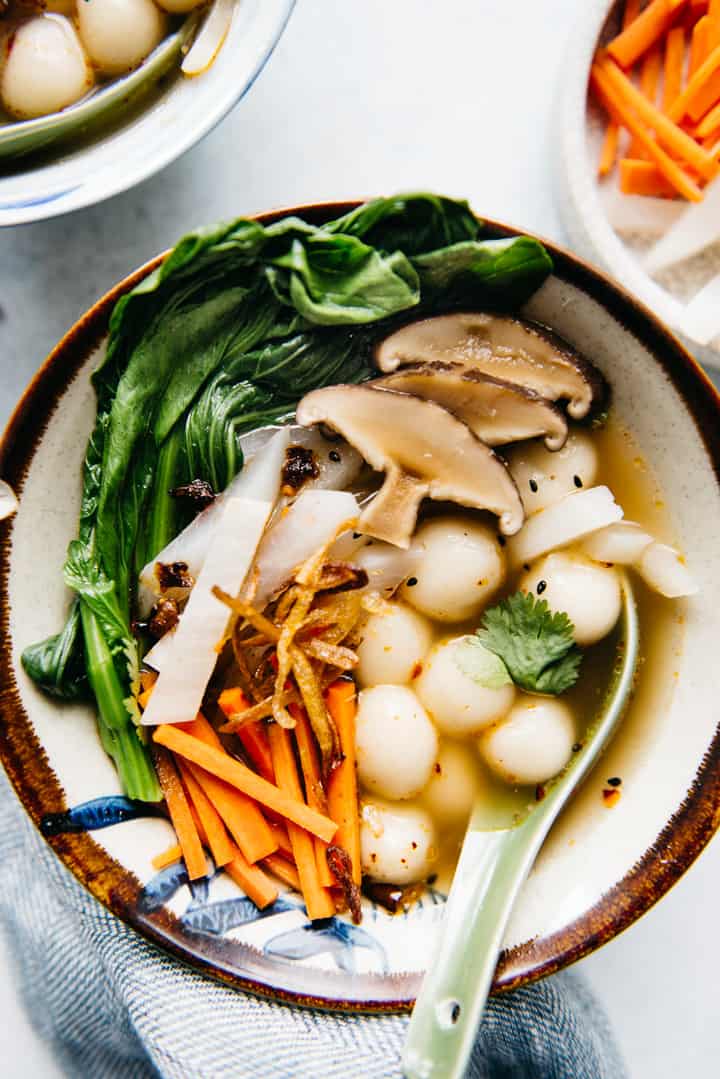
Vegan Savory Tang Yuan (湯圓, Glutinous Rice Dumplings)
Ingredients
Broth
- 5 dried whole shiitake mushrooms
- 1 5" x 5" piece of kombu (dried kelp)
- 1 1/2 tablespoons canola oil
- 1/2 cup sliced shallots
- 2 cloves garlic, smashed
- 2 stalks of lemongrass, cut into 2-inch chunks (see note 1)
- 5 cups vegetable broth
- 1 teaspoon (4g) Diamond Crystal kosher salt, 1/2 teaspoon table salt, add more salt if necessary
- 3/4 teaspoon ground coriander
Daikon
- 3 dried whole shiitake mushrooms
- 1 1/4 pounds daikon
- 1 tablespoon canola oil
- 2 cloves of garlic, smashed
- 4 cups water
- 1 small piece of rock sugar, about 1 inch in diameter or 1 tablespoon granulated sugar
- 3/4 teaspoon (3g) kosher salt
Rice Dumplings
- 1 1/2 cups glutinous rice flour
- 3/4 cup room temperature water
Toppings
- 1 large carrot, peeled and julienned
- 6 ounces yu choy, 油菜
- cilantro
- fried shallots
- black sesame seeds
- hot sauce, I usually use [Lao Gan Ma chili crisp]
Instructions
Make the Broth
- In a small bowl, soak 8 dried shiitake mushrooms with water (you’ll use 3 of them for the daikon). Let it stand for about 15 to 20 minutes.
- Using a lightly damp cloth, wipe the surface of the kombu and set it aside.
- Heat 1 1/2 tablespoons of canola oil in a pot over medium heat. Add the sliced shallots, garlic, and lemongrass chunks and sauté for 2 to 3 minutes, until the shallots soften. Next, add the vegetable broth, 5 hydrated shiitake mushrooms, kombu, salt, and coriander. Cover the pot and bring it to boil.
- Reduce the heat to a low simmer while you cook the daikon and prepare the dumplings. I usually transfer my pot to a smaller burner at this stage.
Cook the Daikon
- Peel the daikon and rinse off any residual dirt. Trim the ends. Slice the daikon into 1/4-inch thick slices on the diagonal. Then, cut the slices into strips.
- In a wok (or a large sauté pan), heat 1 tablespoon of canola oil over medium-high heat. Add the garlic and cook for about 1 minute. Carefully add 4 cups of water to the wok. The water will splatter, so be careful here. Add the daikon, 3 hydrated shiitake mushrooms, salt, and sugar. There should be enough water to just cover the daikon. If not, add a bit more.
- Cover the wok, increase the heat, and bring the water boil. Reduce the heat slightly, and let the daikon simmer for 6 to 8 minutes, until the daikon is tender. Transfer the daikon to a plate. Save at least 2 cup of the water to add to the broth.
Make the Dumplings
- Add the glutinous rice flour to a mixing bowl. Pour in 3/4 cup room temperature water. Stir the flour and water with chopsticks or a wooden spoon. Once the water absorbs, bring the dough together with your hands and knead for a minute, until you get a smooth dough. If the dough is feeling dry, add another tablespoon of water.
- Divide the dough into small pieces, about 1 heaping teaspoon each. Roll the pieces of dough into small balls and transfer them to a plate.
- Use a skimmer or a slotted spoon to scoop out all of the vegetables and spices from the soup broth. Save the cooked mushrooms. Add 1 cup of the daikon broth to the soup broth. Stir and taste the broth and see if you need to adjust the seasoning. Bring the broth to boil again.
- Add the rice dumplings to the boiling broth. The dumplings will be lightly stuck to the plate, so just gently brush them into the broth. Cook the dumplings for about 3 to 4 minutes. Make sure to stir the dumplings frequently to keep the dumplings from sticking to the bottom of the pot. The dumplings should float when they’re cooked.
- Add the julienned carrots and yu choy and cook them for a minute. Then, add the cooked daikon and turn off the heat.
- Serve the tang yuan and vegetables in bowls. Top with cilantro, fried shallots, sesame seeds, and hot sauce, if desired. Slice the cooked shiitake mushrooms and serve them, if desired.
Notes
- To prepare lemongrass, peel off a few of the outer layers and slice them into 2-inch chunks. I usually toss out the top third of the stalk because it is incredibly woody, but you can throw them into the broth as well. I like bashing them with a mallet to help release some flavor. If you have a hard time finding fresh lemongrass, you can use Gourmet Garden’s lemongrass paste, which should be in the refrigerated herbs section at your local supermarket. Note that the lemongrass paste is not vegan as it contains whey. Check out my post on how to cook with lemongrass for more information.
- If you want to make the dumplings ahead, you can freeze the dough and cook them a few days later.
Nutrition
LOOKING FOR MORE CLASSIC CHINESE DISHES? TRY THESE:

Classic Rice Noodle Rolls (Cheung Fun)
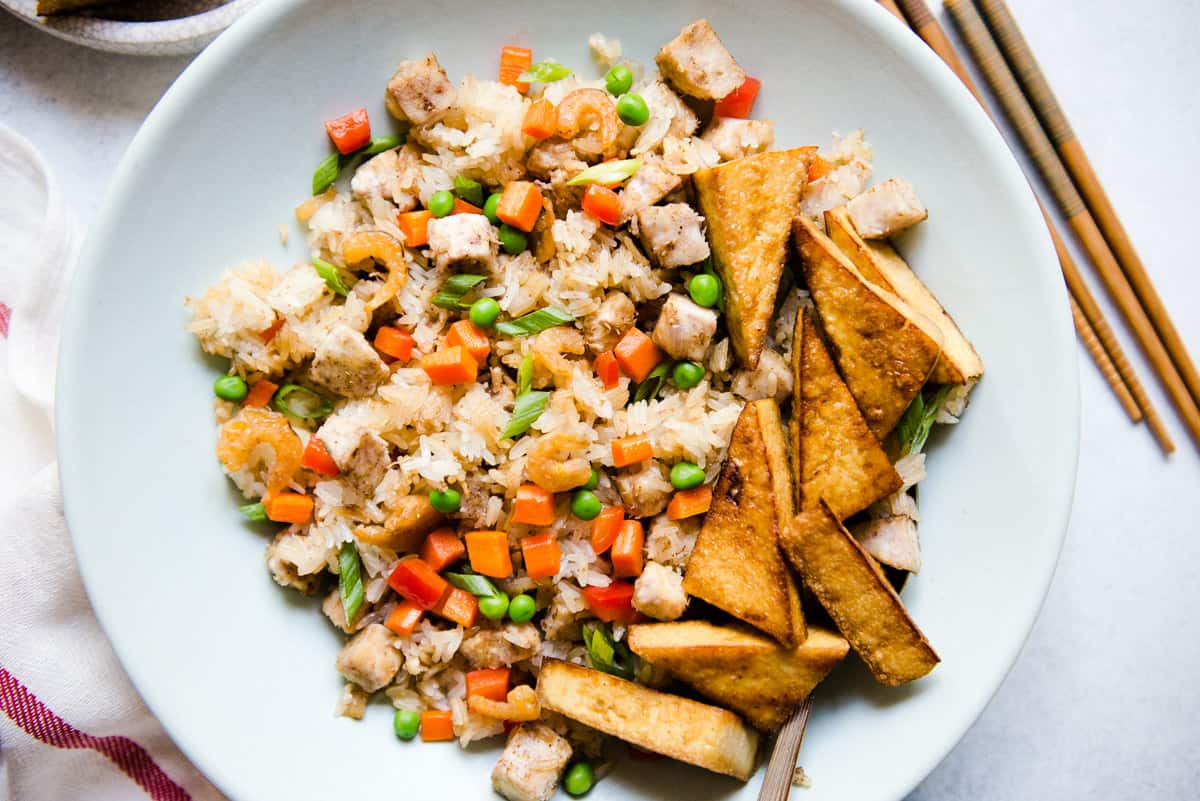

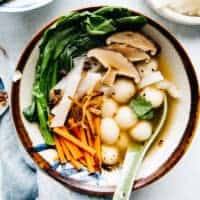

Haley says
This looks delicious and so comforting.
Arthur says
I really like the way you shared with people this recipe. I totally fall in love with this recipe and its history. Thank you so much! I really want to make (to try at least) Tang Yuan, so wish me good luck. 😀